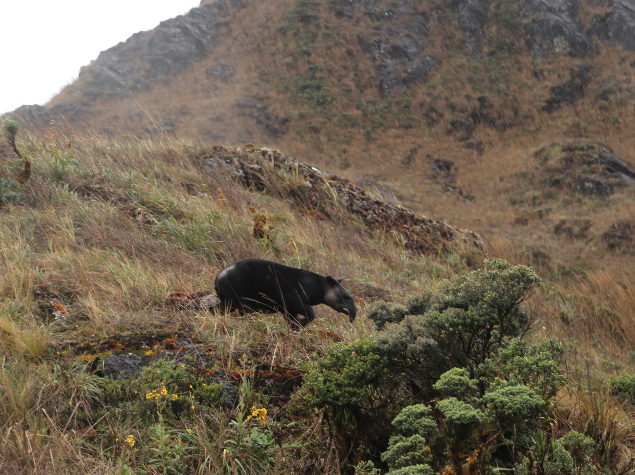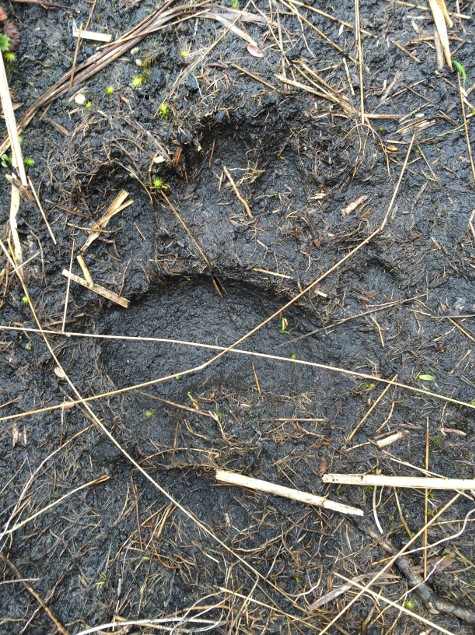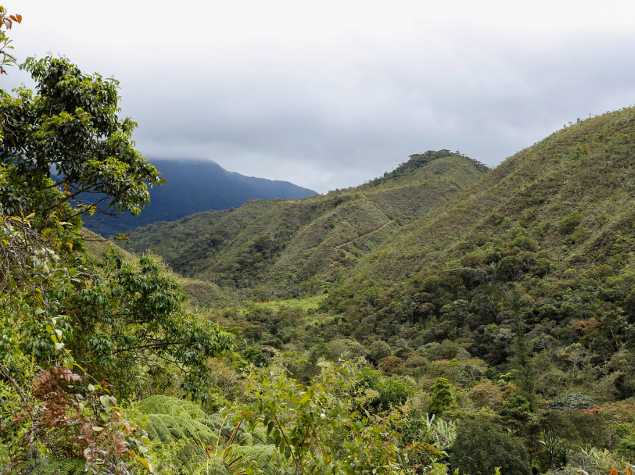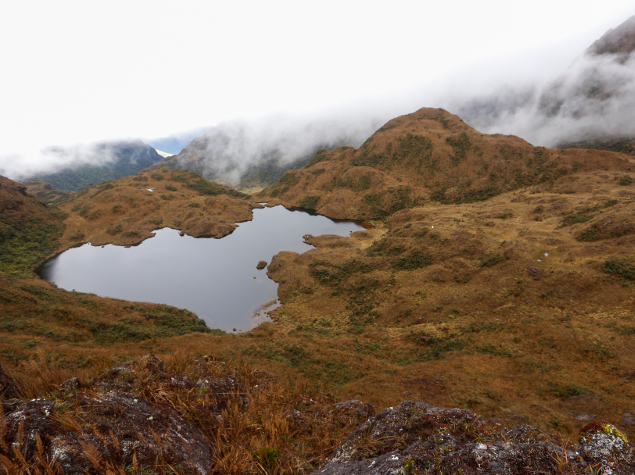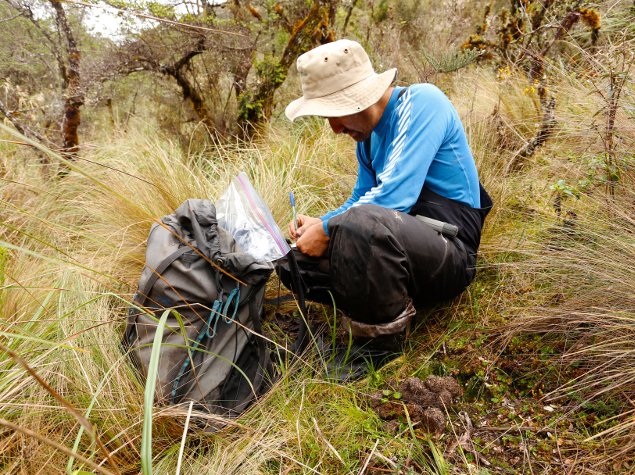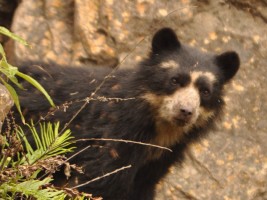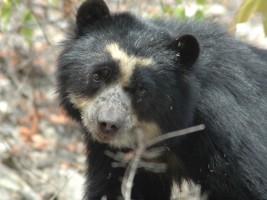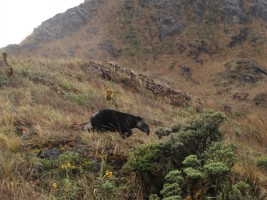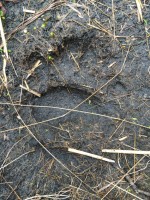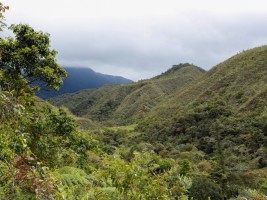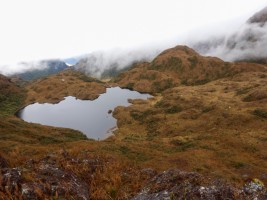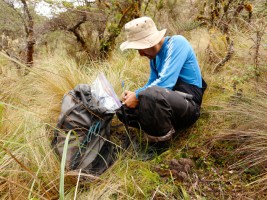Identifying the presence, habitat use, and connectivity of spectacled bears and mountain tapir
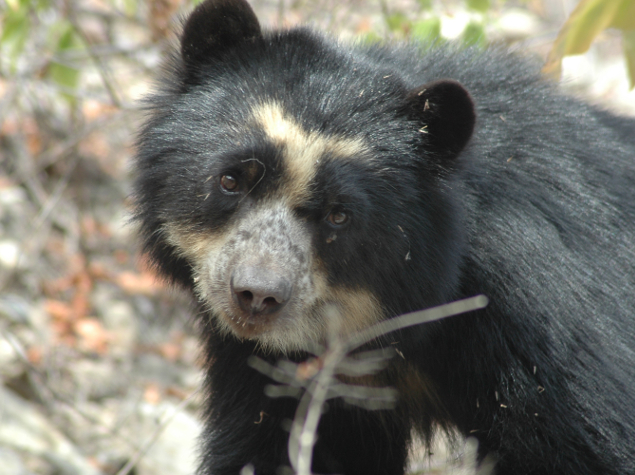
Leche watershed in northern Peru has undergone a series of land transformation since the 1960’s resulting from illicitly occupied territories for land trafficking and drug laundering. Vast swathes of forested and agriculture lands were destroyed and later sold or abandoned. In recent years however, these lands are being reclaimed by local villagers for agriculture and cattle ranching. Consequently, the Leche watershed from the lowest to the highest elevation has become extremely fragmented.
Now reclaimed and used for agriculture, the remaining small parcels of high quality habitat are becoming disconnected thus impeding bears and tapirs from accessing high quality feeding areas. The poaching of these species has been uncontrolled by local governments, consequently contributing to the reduction of their populations.
The Spectacled Bear Conservation Society has been working in the lower sector of the Leche watershed since 2007 using a community based approach to address the threats that spectacled bears face in the lower region. As a result of their work, this region has become a designated regional protected area. However, over 75% of spectacled bears in the watershed live outside the park in the high elevation mountain and páramo ecosystem where the mountain tapir also resides. It is therefore vital to gain a better understanding of the presence of bears and tapirs in these upper regions and assess the connectivity between the upper and lower habitat within the watershed.
The main objective of this project is to determine whether (and how) the spectacled bear and mountain tapir survive in a highly fragmented high elevation páramo habitat and whether connectivity exists between this area and the lower elevation wildlife refuge Laquipmapa in north-western Peru, with the ultimate goal of conservation and long-term survival of the species.
To do so, secondary objectives have been set:
- Carry out research on the spectacled bear and mountain tapir to increase knowledge of their populations and behavioral ecology. Scientific field research will be conducted using sign surveys and remote camera traps. To better understand their ecological needs, biologists and local para-biologists will collect ‘sign’ data including scat, dung, bear trails, tree rubs, and markings
- Determine population of spectacled bears and presence of mountain tapir for permanent monitoring
- Train local citizen scientists to participate in a long term population monitoring program
- Determine high conservation priority areas that include high quality feeding areas and corridors connecting lower mountain habitat with high elevation páramo ecosystem for spectacled bears and mountain tapir
- Re-establish the connectivity that is essential for bear movement between and within the páramo and mountain ecosystems and create a regional protected area
- Enhance the survival of spectacled bears and tapirs through reducing illegal activities, such as land trafficking, deforestation, and poaching. A site-specific action plan will be developed and meetings will be held with local and regional governments, community members and officials from the adjacent national wildlife refuge to discuss potential sites for the creation of a regional protected area
- Reduce deforestation and habitat fragmentation by training local villages to adopt alternative cooking techniques
- Implement a forest guardian environmental education program with schoolchildren living adjacent to bear habitat
Final report summary (February 2017)
Over the funded period, SBCS led various activities :
- Camera traps were installed to study how the two species evolve in the region. Scats were also studied.
- Parcels of habitat, favorable to connectivity for the bears, have been identified and are now protected.
- 100 cattle are no longer free-ranging in the region.
- A private protected area, comprising 19,000 hectares favorable to the bears has been created.
- 200 community members took part in workshops dedicated to pesticide and chemicals use reduction as well as how to construct fuel efficient stoves.
A fire happened end 2016, destroying 30,000 hectares of forest. SBCS decided to lead trainings and sensibilisation about this scourge and reforestation activities.


